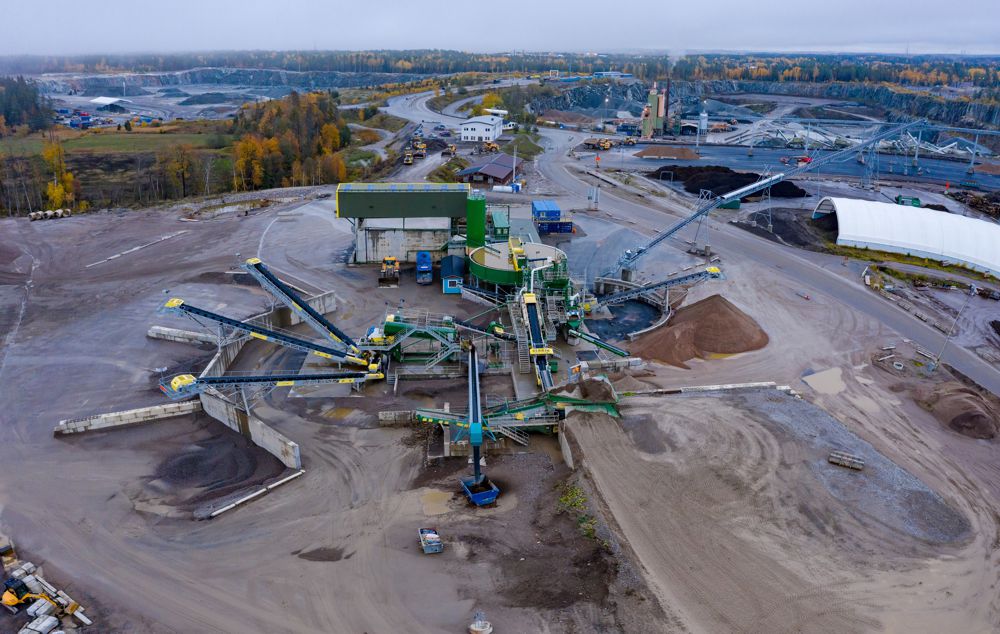Is sand depletion a global crisis?
Sand is, quite literally, the foundation of our existence and one of the most sought-after yet scarcest commodities of the 21st century. It is our most consumed natural resource after air and water, and, crucially, it is finite.
In 2015, as if foreshadowing the Coronavirus crisis, Bill Gates famously delivered a TED talk where he discussed the threat posed to society by an unknown, highly infectious virus and our capacity to respond to such an outbreak. The eight-minute talk highlights how we’re not ready for the next epidemic and is a call for greater investment in, for example, primary healthcare and R&D. It is forward-looking and acknowledges looming threats.
The global sand crisis, too, is looming. We are acutely aware of it, yet, like our preparedness to respond effectively to an epidemic as outlined in that now famous TED talk, we are not making enough progress to mitigate its impact. We need to invest in ways to lessen the burden on natural sand resources now before the threat is upon us.
In his book, The World in a Grain, author and journalist Vince Beiser cites sand as the most important solid substance on earth. So, what would happen if we ran out of it?

Our Reliance on Sand
To understand the consequences of running out of sand, you first need to understand how we consume it.
Our homes, workplaces, supermarkets and more. Where concrete is needed, sand is required. Further still, our roads and infrastructure require sand and so too does many of the items in our everyday life that we often take for granted: consumer electronics, smartphone cameras and processors, glass bottles, windows, cosmetics, fibre optics, water filters, the list is endless.
Even our efforts to respond to the Coronavirus crisis is reliant of the finite natural resource. In the city of Wuhan, the 1,000-bed Huoshenshan Hospital was constructed in a matter of days to treat patients with the disease. Around the world researchers are working to find a vaccine and, yes, the glass petri dishes and microscope lenses used in this research are also made from sand.

Waste as a Solution
Rather than responding to the sand crisis at its peak when both investment and time must be expedited to identify an alternative solution, we should be taking preventative steps now. Central to this is recovering and recycling sand and aggregates from construction, demolition and excavation (CD&E) waste, our single largest waste stream, so that these materials can be given a second-life, returned to the market to support new construction and infrastructure projects.
In the EU, major mineral wastes, including from mining and quarrying and C&D activities, accounted for almost two thirds (64%) of total waste generated in 2016, equating to 3.2 tonnes per inhabitant.
Much CD&E waste goes to landfill or is used to backfill excavated sites, and some is used in low grade applications that could be adequately served by other resources that would uphold a responsible waste management strategy. But there is value in CD&E waste, both economically and environmentally.
CDE, the industry leading manufacturer of wet processing solutions, is supporting materials processors to realise the value locked in CD&E waste. Using highly innovative wet processing technologies that scrub material, float off lightweights (demolition debris) and classify end products, this waste stream can be repurposed to produce washed materials suitable for use in high value construction projects.
Far from alternative materials, these are high quality recycled sand and aggregates recovered from CD&E waste and there many success stories underpinned by CDE wet processing technology.
For example, DA Mattsson, based near Stockholm in Sweden, diverts almost 100% of its incoming CD&E waste from landfill through its CDE wet processing operation. The company produces high quality sand and aggregates that meet EN 12620 specification and it supplies these concrete materials to the Stockholm construction market.
Similarly, Sodextra, in Paris, produces washed high quality, sustainable and consistent in-spec concrete sand and aggregates, thus ensuring the Paris is now also building in a sustainable way even if it is a small volume today.
In the UK, Sheehan Group is producing up to 20,000 concrete building blocks per day from 100% recycled sand and aggregate, and numerous other sites are producing EN 12620, EN 13043 and EN 13242 certified products. These companies are proof that a solution to depleting natural resources is available.
To date, CDE wet processing solutions have supported materials processors around the world to divert over 75 million tonnes from landfill.

Sand Consumption and Population Growth
Our consumption of finite sand resources is directly linked to population growth and soaring urbanisation. By 2050, the world’s population is projected to reach 9.8 billion at a time when 68% of the population will also inhabit urban settings, the equivalent of around 87% of the world’s population today.
To support that trajectory, the IEA CSI Cement Technology Roadmap estimates global cement production will grow by 12‑23% by 2050.
This demand can be met successfully and sustainably through the use of CD&E waste.
Material recovered from CD&E waste is proven, both technically and economically, and despite 75% of concrete produced globally being used for non-structural applications the consumption of virgin sand resources is continuing to rise. These could be fulfilled by equally suitable and certified recycled materials, in turn ensuring that virgin resources are reserved for only the most critical applications requiring the highest strength concrete.
In summary, never before in human history have we witnessed urbanisation at such a rapid pace and it is exhausting our sand resources. By 2050 as many people will live in urban areas as there are in total today on earth.
Global leaders have the data to make an informed decision that sets out a blueprint for a sustainable future. Central to that plan should be a waste management strategy that prioritises a circular economy approach to recover recycled sand and aggregates from CD&E waste – the vaccine to the global sand crisis.




















